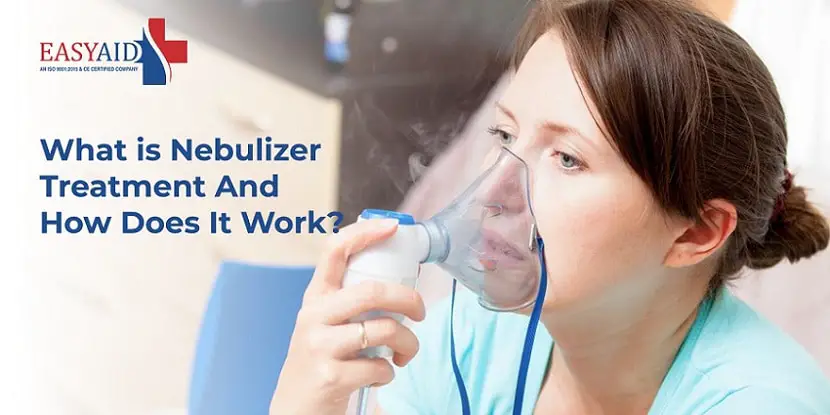What is Nebulizer Treatment

What is Nebulizer Treatment and How Does It Work?
Nebulizer treatment is a common medical intervention used to deliver medication directly to the lungs. It is commonly prescribed for respiratory conditions such as asthma, chronic obstructive pulmonary disease (COPD), and other respiratory illnesses. In this article, we will explore what nebulizer treatment entails, how it works, and its benefits in managing respiratory conditions. Understanding the mechanism and benefits of nebulizer treatment can help patients and caregivers make informed decisions about their respiratory health.
Understanding Nebulizer Treatment:
Nebulizer treatment involves the use of a device called a nebulizer, which converts liquid medication into a fine mist that can be inhaled into the lungs. The nebulizer consists of three main components: a medication cup, a nebulizer compressor, and a mask or mouthpiece for inhalation. The liquid medication, typically a bronchodilator or corticosteroid, is placed in the medication cup. The nebulizer compressor then forces compressed air or oxygen through the medication cup, creating a mist that can be inhaled by the patient.
How Nebulizers Work?
Nebulizers work on the principle of aerosolization, which involves breaking down the medication into tiny particles for easy inhalation into the respiratory system. The mist generated by the nebulizer reaches deep into the lungs, delivering the medication directly to the affected areas. This allows for targeted treatment and faster relief of respiratory symptoms.
The patient can inhale the medication by wearing a mask that covers the nose and mouth or by using a mouthpiece. As the patient breathes normally, the medication mist is inhaled into the airways, where it helps relax and open the bronchial tubes, reduce inflammation, and improve breathing.
Benefits of Nebulizer Treatment:
Nebulizer treatment offers several advantages in managing respiratory conditions:
Effective Medication Delivery: Nebulizers ensure that medication reaches the lungs directly, providing targeted treatment and faster relief of symptoms compared to other forms of medication administration.
Easy to Use: Nebulizers are user-friendly and suitable for patients of all ages, including young children and the elderly. They require minimal coordination and effort to administer the medication.
Flexibility in Medication: Nebulizers can deliver various types of medications, including bronchodilators to open the airways and corticosteroids to reduce inflammation. This flexibility allows healthcare providers to tailor treatment plans to individual patients’ needs.
Relief for Acute Symptoms: Nebulizer treatment is particularly useful during acute episodes of respiratory distress. It can quickly alleviate symptoms such as coughing, wheezing, and shortness of breath.
Improved Lung Function: Consistent and appropriate nebulizer use can help improve lung function over time, making it an essential component of long-term respiratory management.
Proper Maintenance: Regular cleaning and maintenance of the nebulizer equipment is essential to prevent contamination and ensure effective delivery of medication.
Prescription and Monitoring: Nebulizer treatment typically requires a prescription from a healthcare provider. It is important to follow the prescribed dosage and frequency as directed.
Potential Side Effects: While nebulizer treatments are generally safe, some individuals may experience mild side effects such as a rapid heartbeat, tremors, or a dry mouth.
Complementary Therapies: Nebulizer treatment can be used in conjunction with other respiratory therapies, such as inhalers, pulmonary rehabilitation, and lifestyle modifications.
Travel Considerations: For individuals who require nebulizer treatment, it is essential to plan and prepare for medication administration while traveling.
Conclusion:
Nebulizer treatment is a valuable tool in managing respiratory conditions by delivering medication directly to the lungs. Its ability to provide targeted treatment, ease of use, and effective relief of symptoms make it a preferred choice for many patients. By understanding how nebulizer treatment works, individuals can better navigate their respiratory health and work with healthcare providers to optimize their treatment plans.
In conclusion, nebulizer treatment plays a vital role in managing respiratory conditions by delivering medication directly to the lungs. Its effectiveness in providing targeted relief, ease of use, and ability to improve lung function make it an essential tool in respiratory care. By understanding the mechanism of nebulizer treatment and considering the associated factors, patients and caregivers can make informed decisions to effectively manage respiratory conditions and improve the overall quality of life with health care products. It is always recommended to consult with healthcare professionals for personalized guidance and support in utilizing nebulizer treatment as part of a comprehensive respiratory care plan.
